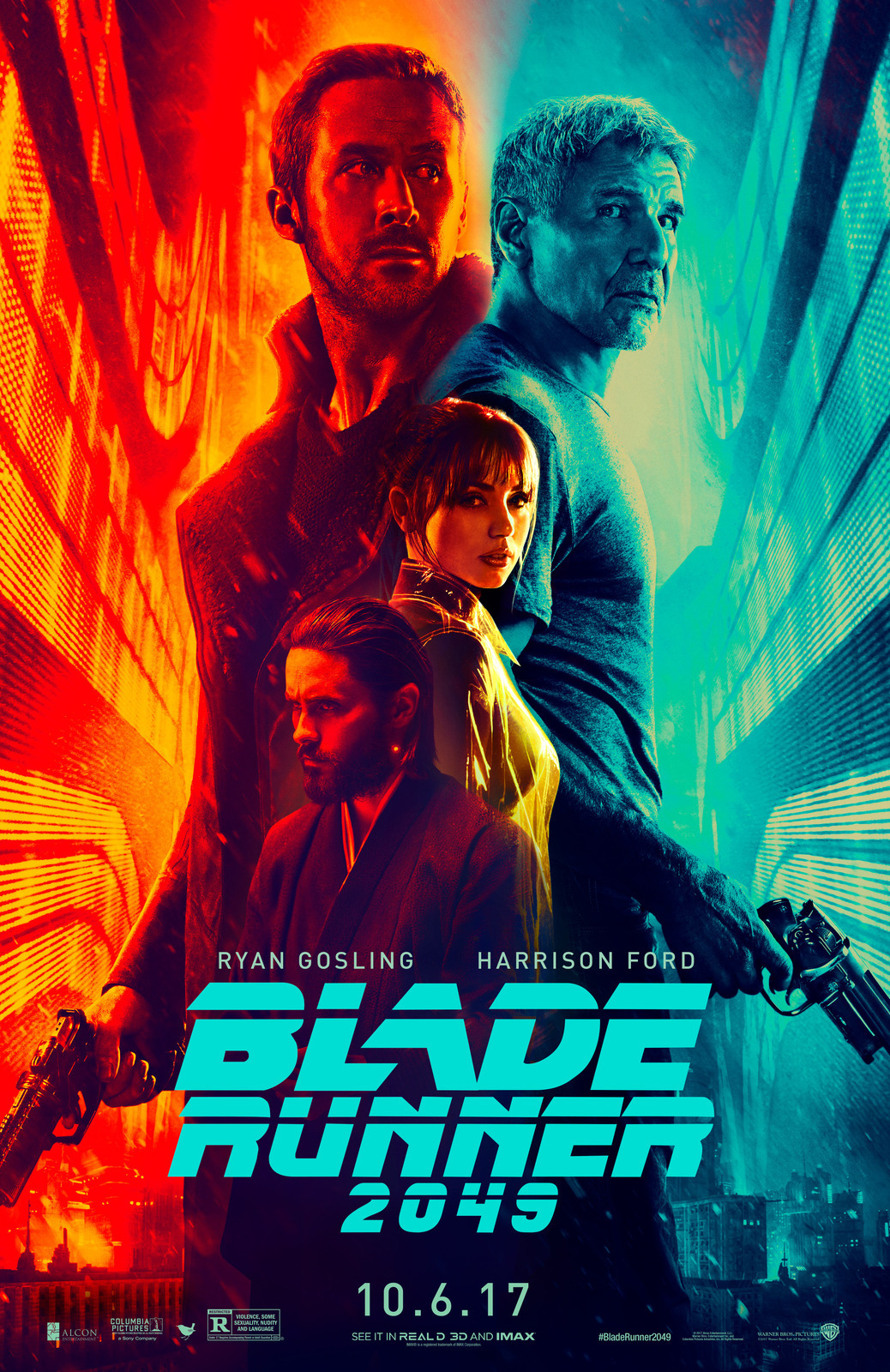Despite $50 million projections, the science-fiction sequel disappointed with a front-loaded $32 million debut, skewing older and male. With an across-the-board positive critical response, it seems destined to share the same fate as its predecessor which did not sell many tickets at the box office either, but became a cult classic.
Set 30 years after the events of ‘Blade Runner,’ the new film follows Officer K (Ryan Gosling) and the mysteries he uncovers concerning human and bioengineered replicant coexistence. In an alternate dystopian Los Angeles, he is a blade runner for the police department responsible for “retiring” older model rogue replicants designed by the Tyrell Corporation. Unlike Harrison Ford’s character from the 1982 original, he is specified as an obeying replicant model designed by the Wallace Corporation.
The story begins on a protein farm where an old box of bones is discovered underneath a dead tree. This leads to K tracking down a missing former officer, Rick Deckard (Harrison Ford) for some important questions. Director Denis Villeneuve (“Arrival”), carrying the torch passed on by Ridley Scott, answers some while keeping the mystery alive.
The screenplay by Hampton Fancher and Michael Green expands and deepens the original as well as the book that inspired it, “Do Androids Dream of Electric Sheep?,” by Philip K. Dick. It is overlong at two hours and forty-three minutes, but K’s journey and perspective dig deeper into the core philosophies about memory and empathy that the novel touched on in 1968. All these years later and it still is not known what it means to be human, but dying for something may be the closest one can get to the truth in this future world.
Jared Leto plays Niander Wallace, the bioengineering tycoon who wants to mass produce replicants for off-world colony slave labor. He is sinister in this god-complex part and his limited screen presence makes the role more substantial. His replicant henchwoman, Luv (Sylvia Hoeks) is the real merciless villain who hunts down K in pursuit of his findings.
Robin Wright’s Lieutenant Joshi brings with her a sense of assertiveness that also allows for moments of compassion with Gosling’s broody character, but her role is otherwise underutilized. The lieutenant fears change that her officer’s secret will bring and she has a tense scene with Luv that is one of the film’s many highlights. At one point she says “The world is built on a wall that separates kind. Tell either side there’s no wall, you’ve bought yourself a war.”
Ana de Armas is Joi, K’s artificially intelligent companion. She’s like Scarlett Johansson’s character in “Her,” if she had a hologrammed body. She hires a pleasure replicant (Mackenzie Davis as Mariette who is also a part of a replicant freedom movement) and projects herself onto her body, making for one of the most surreal love scenes. Her complex character gets to experience the world first-hand and is the only emotional throughline to K, making her perspective especially unique.
By the time Ford shows up, the story is settling into its third act by brilliantly turning the narrative upside down and upending some expectations. He turns out to give a seriously powerful supporting performance while Gosling holds his own weight up against the leading man. His chilly expression complements the replicant role, but he can also convey what is going on underneath the surface.
Barkhad Abdi shows up in a blink-and-you-miss-it scene as well as Edward James Olmos, reprising his role as Officer Gaff from the original. Gaff’s meta cameo was revealed in the final trailer of the mostly spoiler-phobic marketing and it is a shame that the scene is an uncomfortably self-aware moment of fan service. His character, as well as Dave Bautista’s, are featured in one of three prequel short films that enhance the timeline set in the years 2022, 2036, and 2048. Bautista grows as a dramatic actor in the role of Sapper Morton, the replicant protein farm owner at the beginning.
‘Blade Runner 2049’ excels in almost every aspect of its punk noir design. Cinematographer Roger Deakins uses unusual sources of light while also staying true to Scott’s spotlighting that pioneered a filmmaking technique. There are several iconic shots, though one striking image is of Officer K walking through massive erotic statues in an orange, high-radiation atmosphere inspired by an Australian dust storm in 2009. Production design by Dennis Gassner is an inspired look at what the future of this universe might look like with environmental change, sexualized cityscapes, and overpopulation.
Ridley Scott (“Alien,” “The Martian”) helped bring cyberpunk into popular culture so the smoky high-rises and neon Asian influence continue to dominate the distinct look that has been cited by Mamoru Oshii (“Ghost in the Shell”) and Christopher Nolan (“The Dark Knight”) as an influencer of their works. Costumes by Renée April accentuate the gritty future vision by being durable and ultramodern, yet lived-in. Gosling sports a leather, fur-lined trench coat with a magnetic closure and collar that pops up to form somewhat of a mask. His worn out spinner vehicle is also full of tech and style, echoing the brutalism of this grim fantasy.
The unresolved true identity of Deckard is emblematic of the fact that this sequel feels like a natural extension of the original. Villeneuve has pulled off a considerable feat in this day in age of meaningless, cash-grabbing remakes and will continue to work within the genre on an adaptation of the landmark novel, “Dune.” Hopefully he collaborates with Deakins for the fourth time because the duo has crafted a transcendent, high-art blockbuster here. It is a neo-noir cyberpunk drama that will not make even a portion of what “Star Wars: The Force Awakens” did, but it is the better (and riskier) sci-fi sequel event film of the decade.
Four and a half stars out of five stars
JESSE BAALMAN
jbaalman@lc.edu




